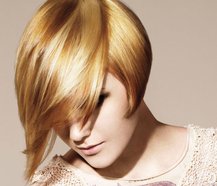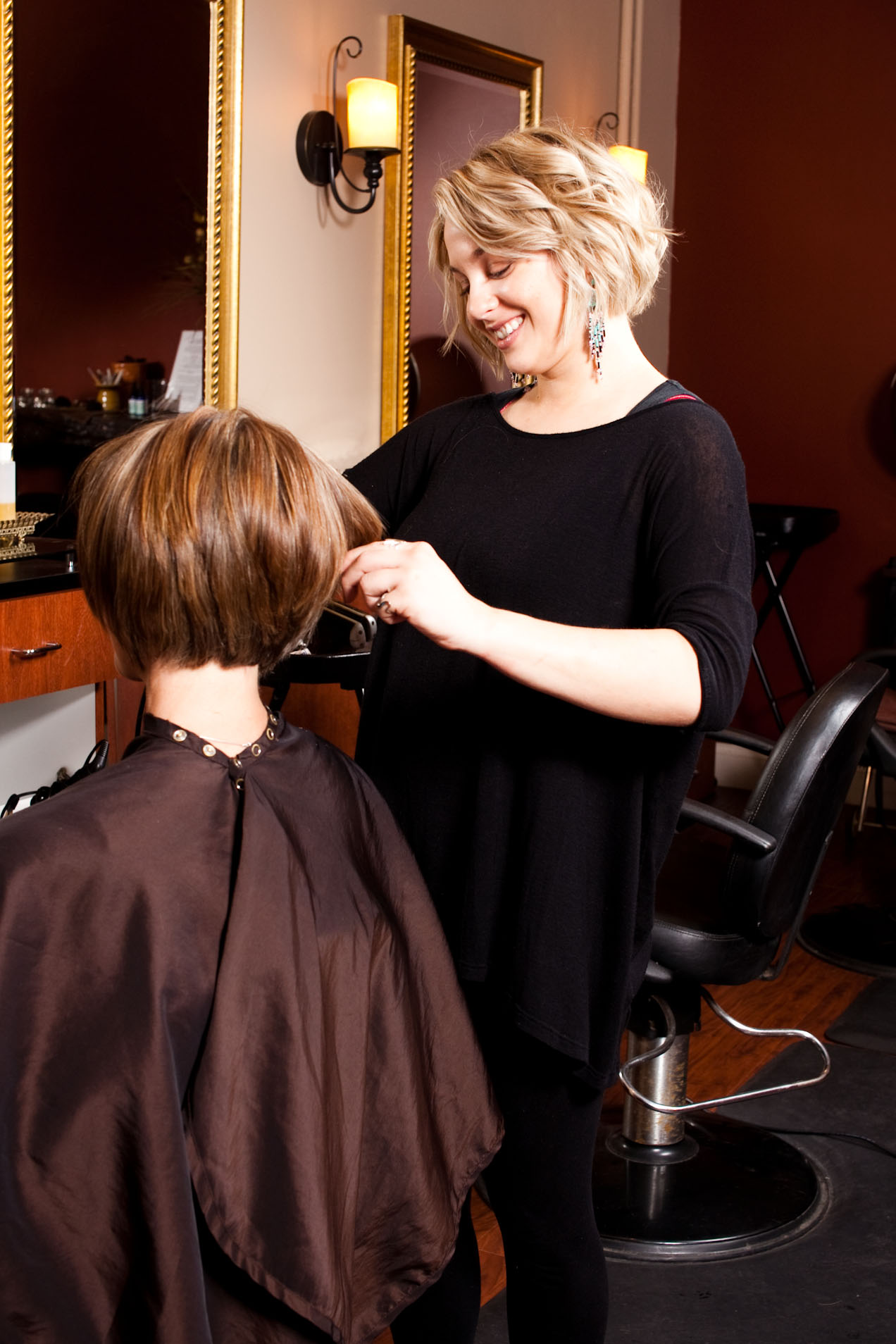Every day thousands of women have their hair professionally colored. In fact, 54% of us color our hair regularly! The hair color industry is ever changing, and ever growing - unfortunately environmental and immunity complications for salon clients are also growing. Much of this is due to the adverse effects of ammonia. Leaving the salon far from “refreshed,” clients end up with headaches, stinging eyes, trouble breathing, or a nasty rash.
Conventional hair dyes usually contain ammonia, which is specifically designed to burn and degrade surfaces. Many products labeled as ammonia-free contain a substitute, which is just as harmful as ethanolamine. However, a new breed of hair color is available - green, fumeless, non-damaging, ammonia-free hair color. We look at why Kasia Organic Salon and other inspiring natural beauty salons are loving ammonia-free color. As we know, it’s part of the future of beauty!
Kassie at Kasia Organic Salon educates hairstylists, aiming to rectify the lack of knowledge in the hairdressing profession about the color lines they use on a daily basis. “The future is now, and it's high time hair salons start using healthier options for themselves as well”, says Kassie Kuehl.

No Ammo! Why Conventional Color Just Doesn’t “Cover” It
The reasons for choosing an ammonia-free (and ammonia-substitute-free) hair color fall into three categories:
- Your body's general health
- The health of your hair
- The health of your environment
General Body Health
Ammonia-based dark hair dye were linked by the National Cancer Institute in 1994 to a greater incidence of non-Hodgkin's lymphoma and multiple myeloma. A study published in 2001 by the International Journal of Cancer found that people who use permanent hair dye are 100% more likely to develop bladder cancer than those who use no permanent dye. 4-ABP is a known human carcinogen, and was recently found in off-the-shelf hair coloring products.
Hair Health
The characteristic flyaway and faded look that you see on heavily peroxided women comes after long-term use of ammonia agents, which leave the hair’s cuticle open and make the hair dry and brittle. Tyrosine, one of hair's amino acids, is also damaged by ammonia-based products. When Tyrosine is diminished, this greatly affects the hair's ability to hold onto color.
Ethanolamine is an alternative to ammonia, however when ethanolamine is used in hair color in order to gain 'ammonia-free' status, it needs to be included in concentrations up to 5 times that of ammonia. Ethanolamine is an 'adhesive' type chemical, which can never completely be washed out of your hair and off your scalp. After coloring your hair with ethanolamine-containing products, every time you wash your hair the water acts as a mild oxidizer, inflicting further damage on your hair. Fading and gradually developed dryness after coloring the hair are usually attributable to ethanolamine.
“Then how?” Kasia Salon’s color line uses an plant-based alkaline agent that slowly swells the cuticle, then controllably closes the cuticle, returning it as closely as possible to its previous state.
Environmental Health
Over 6.2 billion ounces of harmful chemicals from shampoos and conditioners are washed down the drains and out into our water every day.
Leaving the salon retouched … and refreshed!
Educator and salon owner Kassie Kuehl, spurred by her own health reactions due to working with accumulated amounts of fumes at the salon, built her ammonia-free foundations with Aveda. Now her own business, Kasia Organic Salon, offers fabulous color services so clients can enjoy their experience without inhaling noxious chemicals or experiencing irritated skin and scalp.
Hair Color with a Conscience - Is It for You?
Who should use ammonia-free hair color?
Anyone that is concerned with the volume of chemicals they ingest every day should look into natural, ammonia-free hair color. However, it is even more useful at some particular stages of life! Look up your nearest organic salon if you:
- Are pregnant - A growing body is well-sensitized to environmental hazards and tiny, unformed human beings are not so lucky. Avoiding chemical exposure is especially important when you are pregnant - but that doesn't mean you have to give up that flexibility with your looks, free of harmful fumes or odors!
- Are covering grays - If your hair is losing (or has lost) its natural color, you'll be looking to color more often. With ammonia-free color, your hair doesn’t lose the ability to hold color and remains strong and healthy, rather than developing the characteristic frizzy, flyaway look.
- Cancer and Survivors of Cancer – With the specific approval of their physicians, this is safe for cancer survivors without any harmful side effects and sensitive smells, and leaves the hair soft and sultry again.
- Young or elderly - Younger and older people are especially sensitive to harsh chemicals. Ammonia-free hair color is particularly recommended for under-18s and over-60s.
A Beautiful Health Lifestyle - Where to Find Ammonia Free Hair Color
Once you know the dangers of ammonia-based hair colors, those 'Ammonia Free!' labels sitting on the shelf right next to all the others look pretty tempting. This can be a better alternative when purchasing an off-the-shelf coloring product, but remember the dangers of ethanolamine. Check for both ammonia and ethanolamine ingredients in any hair color you buy off the shelf.
What to do with your new, nutrient-rich color now that you have it?
Ask your hairstylist about after-care and everyday maintenance products that let you keep up with the natural snowball you've started rolling!
Harsh ingredients and harsh environments contribute to fading color. Choosing the proper shampoos, conditioners and UV protective styling products will help prolong the life of your color. Avoid harsh ingredients such as sodium lauryl sulfate, and petrochemicals such as propylene glycol and parabens.
The better the health and condition of your locks, the longer your color lasts, the springier your curls and the smoother and glossier your hair will be. Think of it as an investment in your investment. Let your hair feel as good as your conscience!
Natural Beauty is on the move!
There are a number of organic beauty salons growing across the country, where you can discover that your hair can be just as silky and glossy, your skin as vital and fresh, and your cosmetics just as potent and long-lasting, but without the harsh chemicals!
Kassie Kuehl is a respected leader and educator in natural health and beauty care. The founder of Kasia Organic Salon and many result orientated "beautiful health" products, and experts in ammonia free hair color. Kasia remains on the cutting edge of all-natural, non-toxic, and organic professional hair, skin, and body products and services. To become an Informed Beauty, contact Kassie at 612.386.4044, or visit www.kasiaorganicsalon.com.











